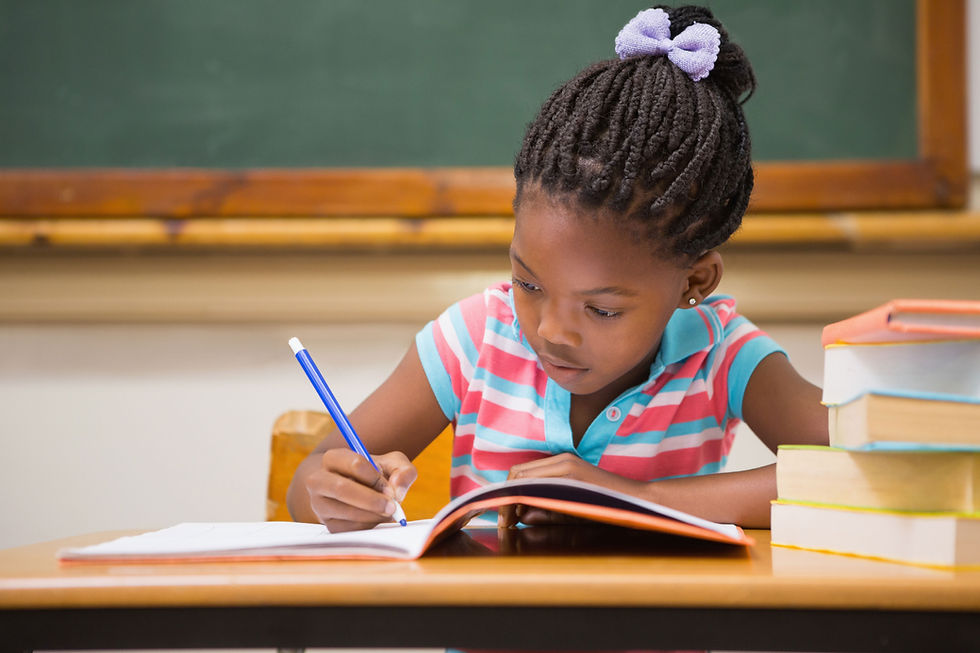The Importance of Vision Screenings in Children
- Santiago Marván
- Aug 7
- 4 min read
Updated: Aug 14

Vision is one of the most important foundations for learning and development in childhood. And yet, many parents assume that if a child doesn’t complain about blurry vision, their eyesight must be fine. But seeing clearly is only one piece of the puzzle.
Regular vision check-ups from an early age help detect issues that may be silently impacting a child’s school performance, motor coordination, behavior, and even self-esteem.
🧠 Sight vs. Vision: They’re Not the Same
It’s a common misconception: if a child isn’t squinting or complaining about reading, their vision must be fine. But here’s the key distinction:
Sight refers to visual acuity, how clearly a child sees objects at different distances.
Vision goes far beyond that. It involves a set of complex brain-eye coordination skills that allow us to perceive, interpret, and respond to what we see.
🔍 Essential Visual Skills in Childhood

These lesser-known visual functions are critical to learning and day-to-day life:
👋 Eye-Hand Coordination: Enables writing, cutting, building puzzles, or catching a ball.
🔁 Visual Focus (Accommodation): Allows smooth adjustment between near and far vision, like switching between notebook and whiteboard.
📏 Depth Perception: Helps estimate distance and move through space safely.
📖 Visual Tracking: Lets eyes smoothly follow moving objects or lines of text while reading.
⚡ Saccadic Movements: These rapid jumps between points help with reading fluency. Poor saccades can lead to skipped lines or slow comprehension.
🧩 Vision Is Processed in the Brain
More than 80% of the sensory information we process comes through our eyes, but it’s the brain doing the heavy lifting.
Visual Cortex (Occipital Lobe): Processes basic input, light, shape, color, motion.
Parietal Lobe: Integrates spatial awareness and body coordination.
Temporal Lobe: Recognizes faces, objects, and visual patterns.
Frontal Lobe (Executive Functions): Supports attention, planning, and organization of visual information for complex tasks like reading or problem-solving.
⏳ How Vision Develops Over Time

Vision develops rapidly from birth through early elementary school. Here’s a general timeline:
0–3 months: Begins focusing and following slow movements.
4–6 months: Eye-hand coordination and depth perception emerge.
6–12 months: Visual tracking and focus improve; baby explores space more confidently.
1–2 years: Strengthens motor-visual connection and spatial awareness.
3–5 years: Develops binocular vision and more precise saccadic eye movements.
5–7 years: Most visual systems should be fully matured, ready for reading, writing, and organized visual tasks.
📌 If by age 6 or 7 a child is still struggling with reading, writing, or visual coordination, a comprehensive vision exam is essential.
🚩 Red Flags to Watch For
Pay attention if your child…
Sits very close to screens or paper.
Covers or closes one eye to focus.
Complains of headaches or eye strain.
Struggles to copy from the board.
Gets distracted easily while reading or writing.
Bumps into things or has poor coordination.
Avoids visually demanding activities.
Shows frustration during schoolwork.
🧑🏫 How to Support Visual Development at Home and School

👪 At Home:
Ensure good lighting and minimize screen glare.
Provide high-contrast materials and various textures.
Encourage eye-hand activities like puzzles, catch, and block building.
Limit screen time and prioritize active visual exploration.
🏫 At School:
Seat the child near the board.
Use large, high-contrast fonts.
Allow for visual breaks during long tasks.
Adapt materials (e.g., lined paper, visual aids).
Collaborate with specialists if needed (optometrists, occupational therapists, visual therapists).
🌟 A Kuvo Note
Kuvo is not a diagnostic tool, but it plays a supportive role in encouraging audio-based learning for children who may struggle with reading or visually demanding tasks.

Because it’s voice-powered and screen-free, Kuvo:
Removes the pressure of visual tracking and decoding.
Encourages curiosity and language development in a natural, relaxed way.
Helps children with visual impairments or dyslexia learn in a way that suits their pace, style, and comfort—without the frustrations of traditional reading.
Kuvo is a complement to a child’s development, not a replacement for human interaction. It’s designed to support, not substitute, your presence, care, and connection. 🚀 Ready to support your child’s learning style? Learn more with Kuvo.
👓 Learning with Eyes Wide Open
Healthy vision is essential not just for reading or schoolwork, it’s tied to a child’s confidence, independence, and ability to navigate the world. Catching vision issues early can profoundly improve a child’s life.
That’s why regular screenings with pediatric optometrists or ophthalmologists are so important, especially if there are warning signs or family history.
References
American Optometric Association. (2023). Comprehensive eye and vision examination for children.
Atkinson, J., & Braddick, O. (2012). Visual and visuocognitive development in infancy. Nature Reviews Neuroscience, 13(12), 815–828.
Birch, E. E. (2013). Amblyopia and binocular vision. Progress in Retinal and Eye Research, 33, 67–84.
Hubel, D. H., & Wiesel, T. N. (1962). Receptive fields, binocular interaction and functional architecture in the cat’s visual cortex. The Journal of Physiology, 160(1), 106–154.
Schunk, D. H. (2012). Learning theories: An educational perspective (6th ed.). Pearson Education.
Simons, K. (1993). Visual development: Normal and abnormal. Pediatric Clinics of North America, 40(4), 705–724.
Williams, C., Northstone, K., & Harrad, R. A. (2008). Visual development and visual problems in young children: Updated review and implications for preschool vision screening. British Journal of Ophthalmology, 92(7), 932–938.
Ayres, A. J. (2005). Sensory integration and the child: Understanding hidden sensory challenges. Western Psychological Services.



Comments